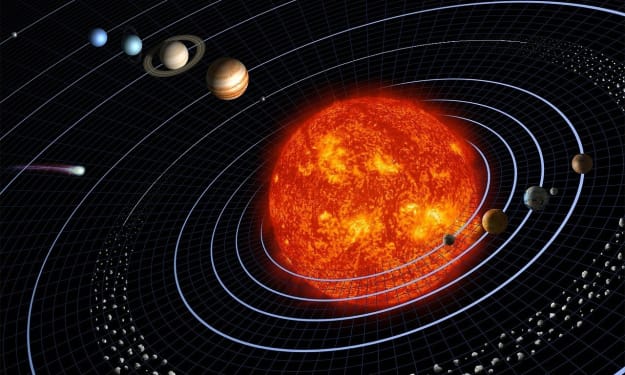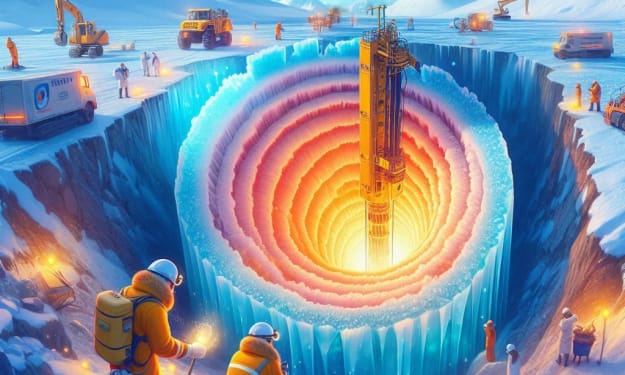Content warning
This story may contain sensitive material or discuss topics that some readers may find distressing. Reader discretion is advised. The views and opinions expressed in this story are those of the author and do not necessarily reflect the official policy or position of Vocal.
Scientists Concerned about 'Doomsday Ice sheet' Finding
Doomsday Glacier

In the immense breadth of Antarctica, beneath the freezing profundities of the Thwaites Glacial Mass, a chilling revelation has left researchers both stunned and profoundly concerned. This monster ice arrangement, inauspiciously named the "Armageddon icy mass," has been holding onto privileged insights that could reshape the destiny of our planet. In this article, we dive into the disturbing discoveries underneath Thwaites Glacial Mass and what they mean for our reality's future.
Since the 1990s, the Thwaites Ice Sheet has been quietly but consistently retreating. Over this limited ability to focus, it has lost a surprising nine kilometers of its enormous ice field. This apparently persistent retreat is an obvious sign of the ice sheet's lessening security, sending waves of worry through established researchers.
The genuine danger lies in its goliath size as well as in the chilling acknowledgment that this icy mass holds a tremendous supply of water inside its frigid hug. In the event that Thwaites Glacial Mass were to capitulate completely to the warming powers of our planet, it would release a destructive flood in ocean levels, making them ascend by multiple feet universally. Such a situation would have extensive and obliterating ramifications for seaside networks around the world.
However, the bad dream doesn't end there. Thwaites The ice sheet is a key component in the fragile equilibrium of Antarctica's ice. It isn't just about its own likely implosion; it could set off a chain reaction in the event that it disintegrates. Unsettling influences close to this icy mass can possibly set off a cascading type of influence, undermining nearby ice sheets and further intensifying the rising ocean levels.
In their journey to uncover the mysteries concealed underneath this premonition icy mass, researchers turned to innovation for answers. Sending a cutting-edge wonder known as 'Icefin,' they wandered profoundly into the frigid pit. This mechanical voyager dove a shocking 2000 feet beneath the icy mass' surface, conquering the devastating strain and freezing temperatures to catch pictures, recordings, and basic information.
The pictures and recordings caught by Icefin give a creepy look into the subglacial world, a spot not many have at any point seen. The frosty caves and lowered scenes recount an account of change, a world in the pain of disturbance.
Past visuals, the information gathered by Icefin is of central significance. It gives us knowledge of the temperature variations underneath the ice sheet, revealing insight into the cycles driving its decay. Besides, it offers important data about ocean levels, an imperative piece of the puzzle in figuring out the more extensive ramifications of Thwaites' downfall.
The Thwaites Ice Sheet is, in numerous ways, a microcosm of the bigger environmental emergency we face. It is an unmistakable fact that our planet is going through fast and frequently capricious changes. The sheer size of Thwaites' downfall fills in as a reminder, an admonition that the environmental emergency is definitely not a far-off future but an ongoing reality.
Researchers, who have devoted their lives to grasping our planet, are sounding the alarm. Thwaites Icy Mass' insecurity isn't simply a remote concern; it's a danger to the actual texture of our reality. It calls for quick and unflinching activity on a worldwide scale to moderate the outcomes of its expected breakdown.
The disclosure of the Thwaites Ice Sheet's weaknesses is a distinct sign of the delicacy of our planet's frosty domains. As the "Judgment Day icy mass" proceeds with its foreboding retreat, the critical need to address environmental change turns out to be more clear than at any time in recent memory. The clock is ticking, and the choices we make today will shape the predetermination of generations to come.
About the Creator
Enjoyed the story? Support the Creator.
Subscribe for free to receive all their stories in your feed. You could also pledge your support or give them a one-off tip, letting them know you appreciate their work.





Comments
There are no comments for this story
Be the first to respond and start the conversation.